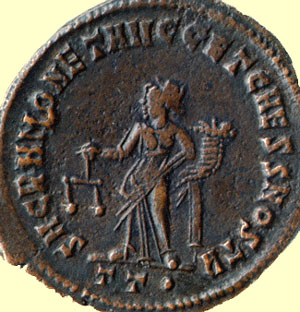 Contents -
Previous Article -
Next Article
Contents -
Previous Article -
Next Article
Civil and military leaders of the Roman Empire are often found to be quite controversial figures. Julius Caesar was a staunch supporter and reformer of or the murderer of the Republic depending on whose viewpoint you take. The author has material on Flavius Stilicho, an important Roman general of the late fourth and early fifth century. Since he was half Vandal, and openly supported and implemented Emperor Theodosius' policy of heavy use of barbarian troops in defense of the Empire, he was not well liked by those who believed in purity of Roman blood in the military forces. Some contemporary sources include Jordanes, Claudian, Apollinaris, St. Jerome, St. Augustine, Bishop Ambrose of Milan, and, a little later, Zosimus. Stilicho, and for that matter Aetius, his counterpart in the 430's to 450's A.D., was condemned as being overly cruel, of favoring his friends and treating all others shabbily, of having designs on the throne, of usurping many aspects of imperial power, of conducting savage raids through loyal provinces, and of being a despotic governor. The other side of the argument has these two men showing strong leadership in an age when true leadership was almost totally unheard of. These men faced and dealt with crises that nearly destroyed what was left of the Western Roman Empire and made the best of a bad military situation and an inept and weak government. In this last case, those who applaud Stilicho and Aetius also condemn Honorius and Valentinian III as weak puppet emperors with an acute lack of initiative of any kind.
A few interesting items of ancient trivia may help you and your class to realize how these peoples' lives were radically different and yet very much like our own. Graffiti on the walls of Pompeii promotes political candidates, sings the praises of popular gladiators, and instructs the reader with whom he might spend the evening and a few copper coins having a good time. Students will be surprised at how much of the modern world they can recognize in history.
Go to next article:
Go back to previous article: